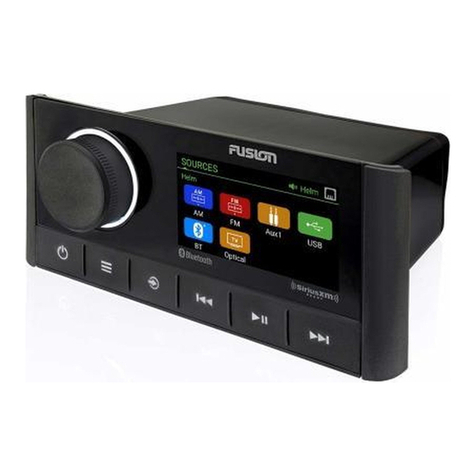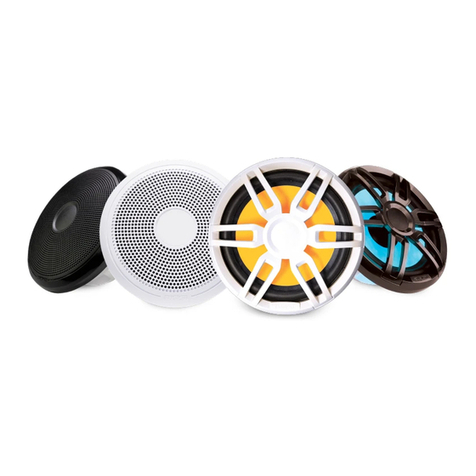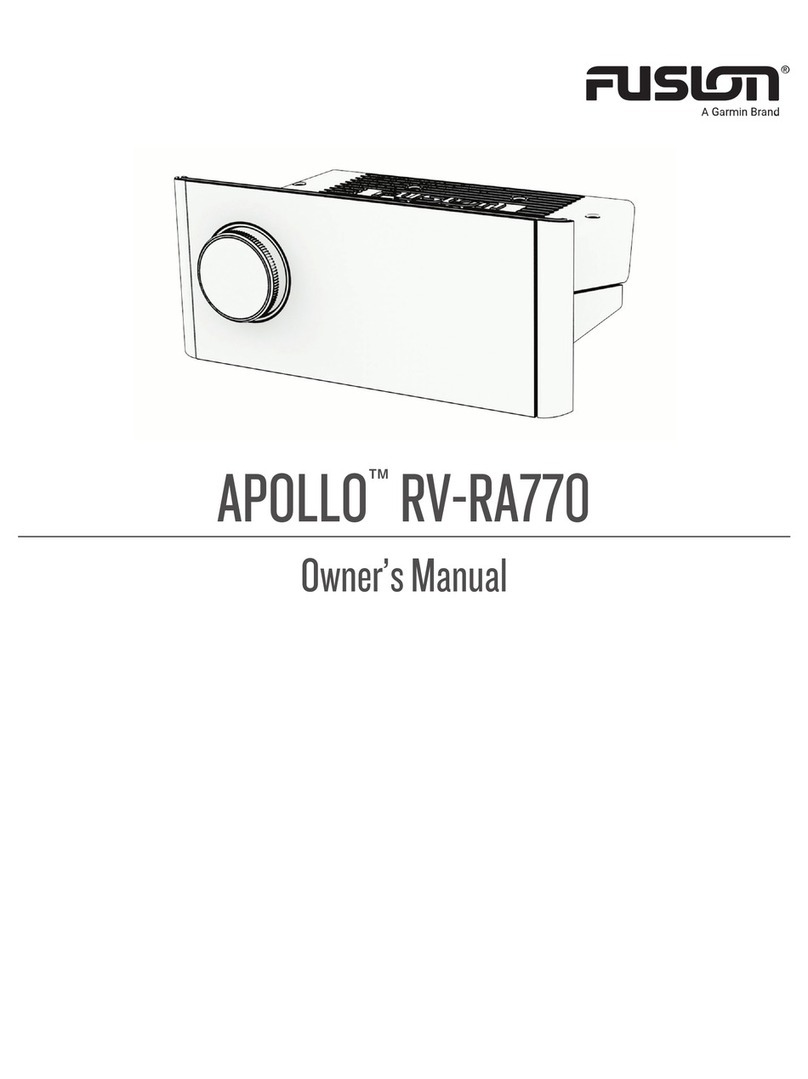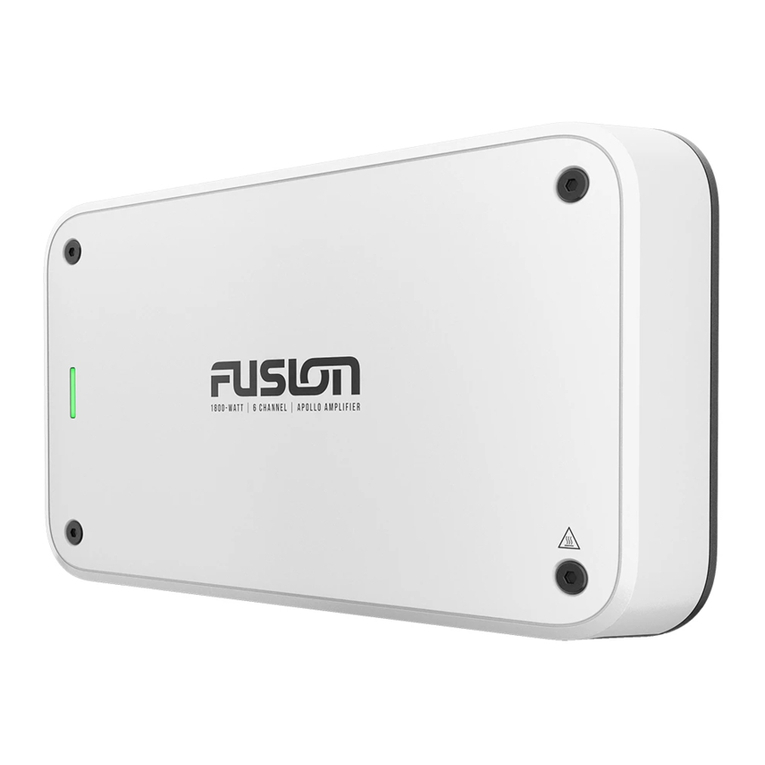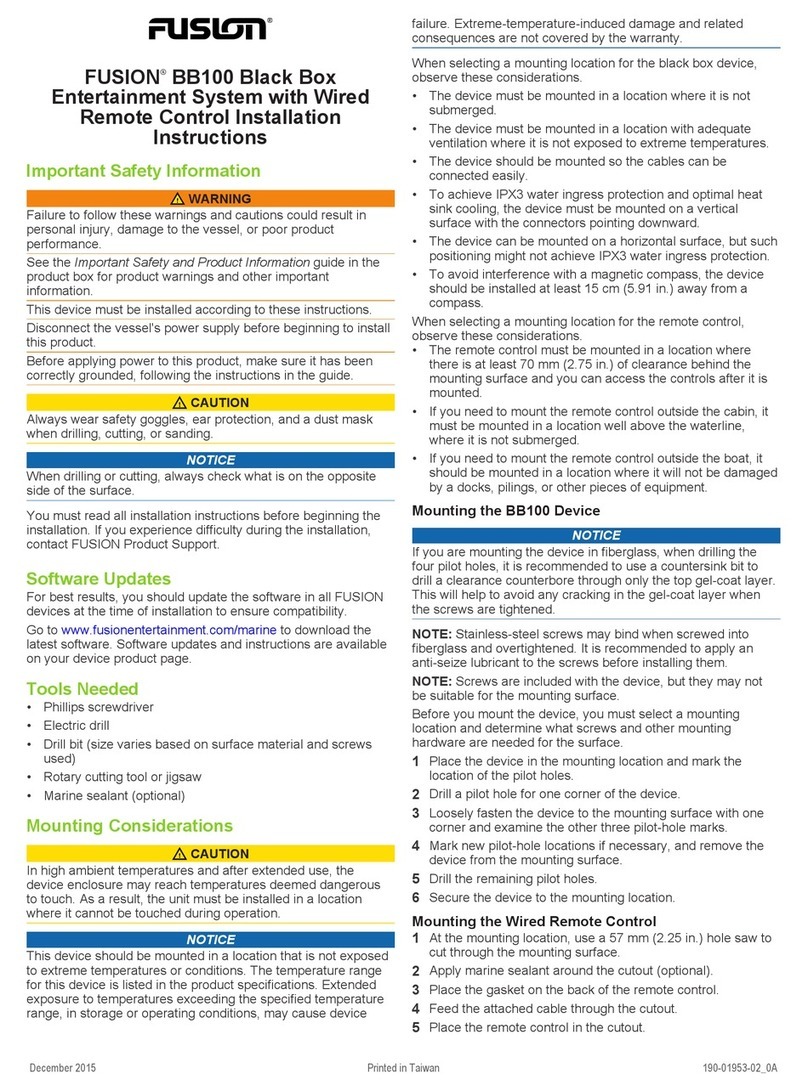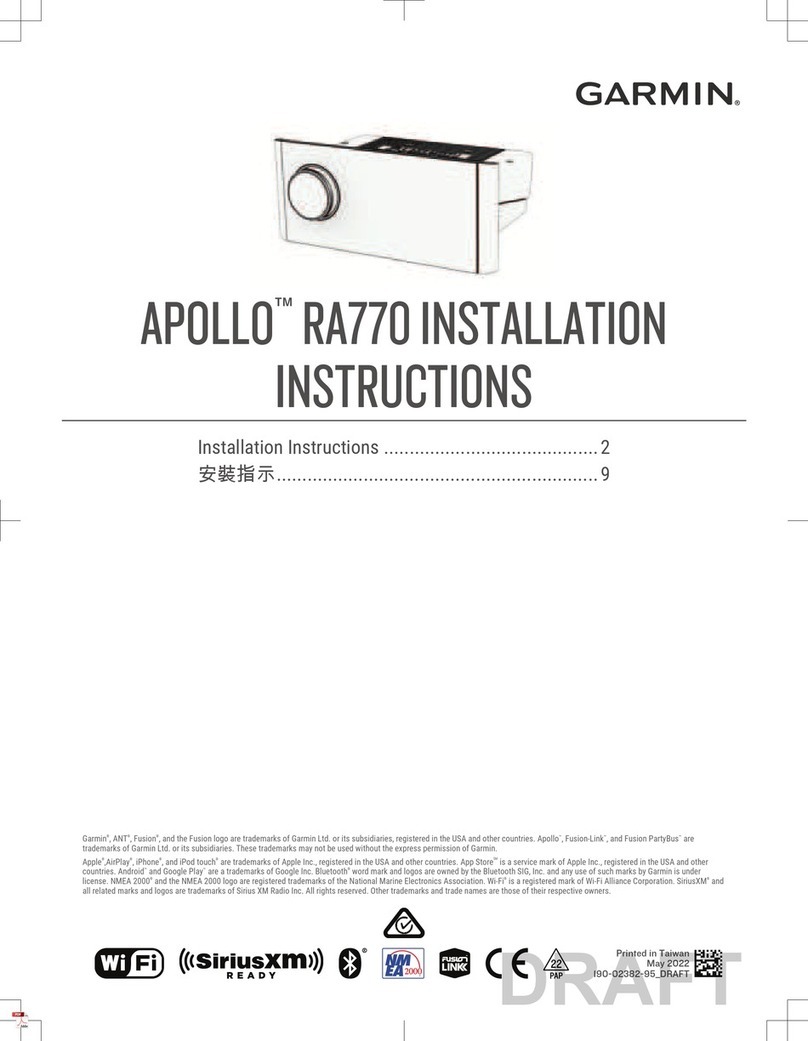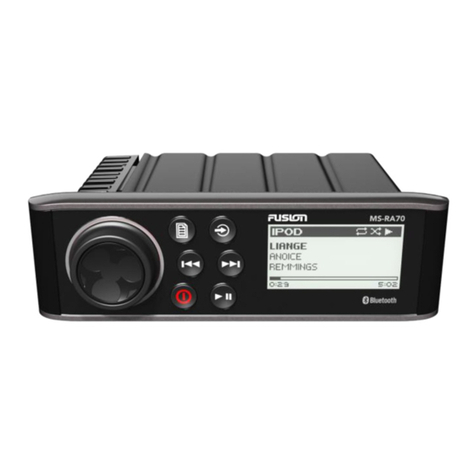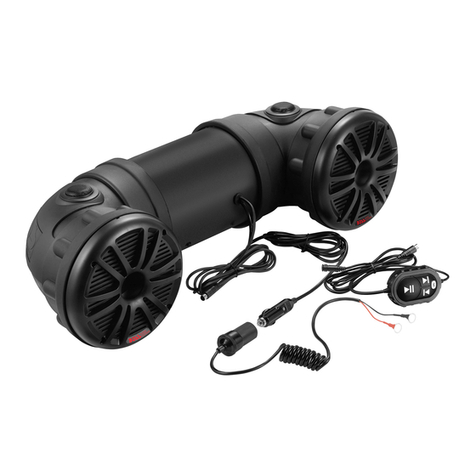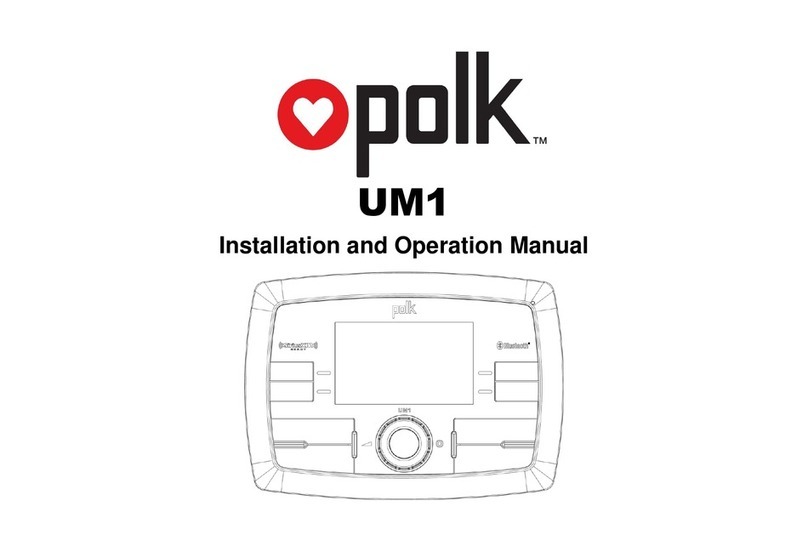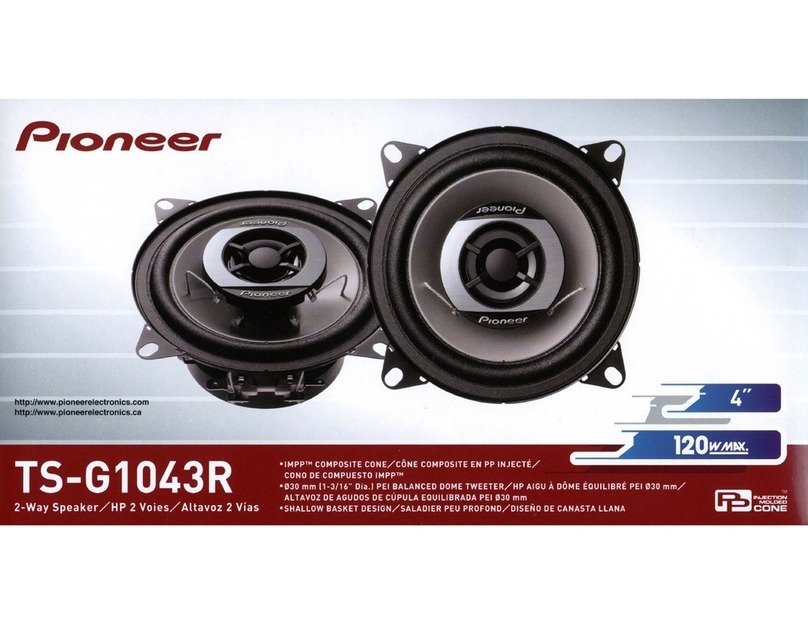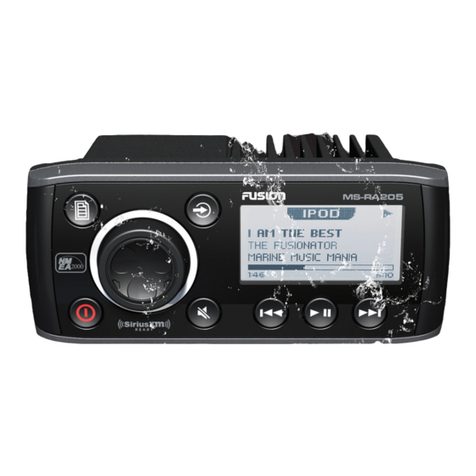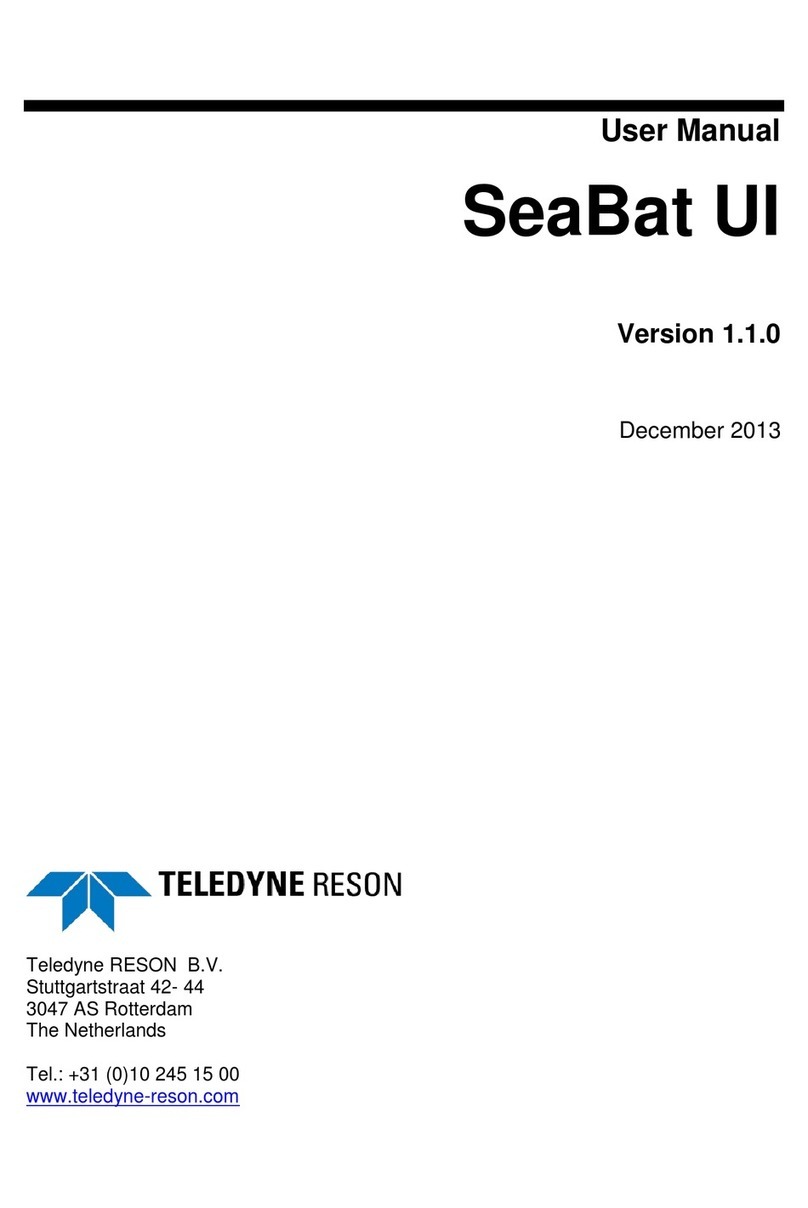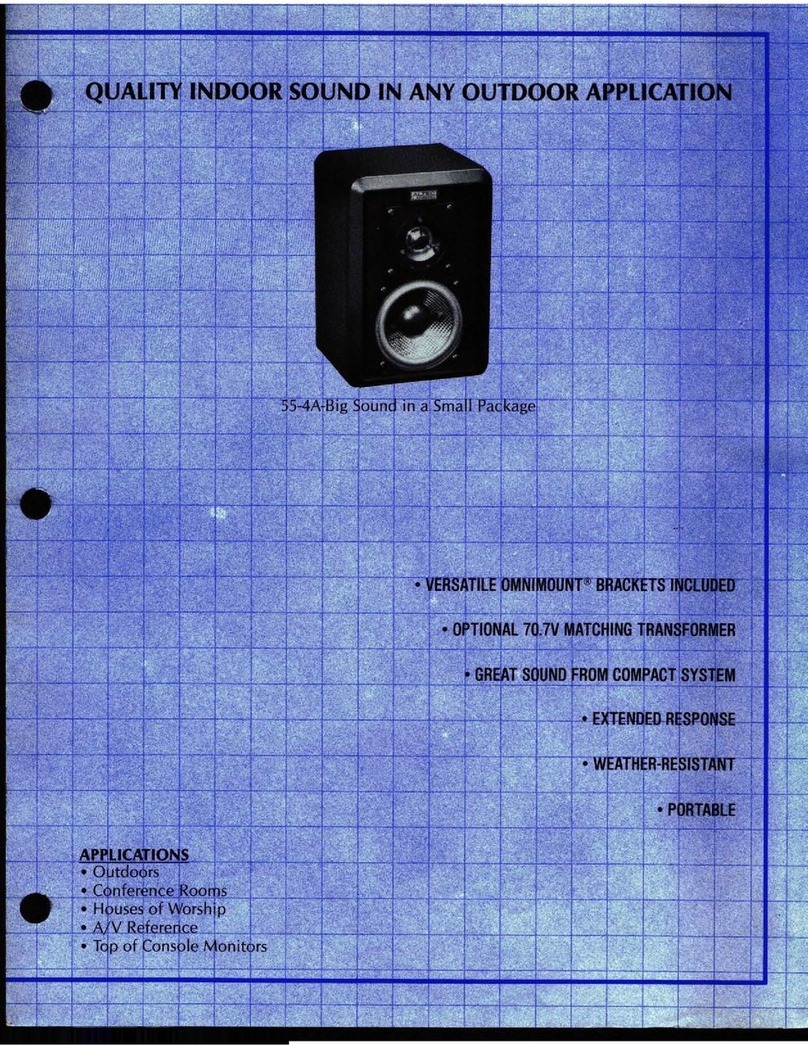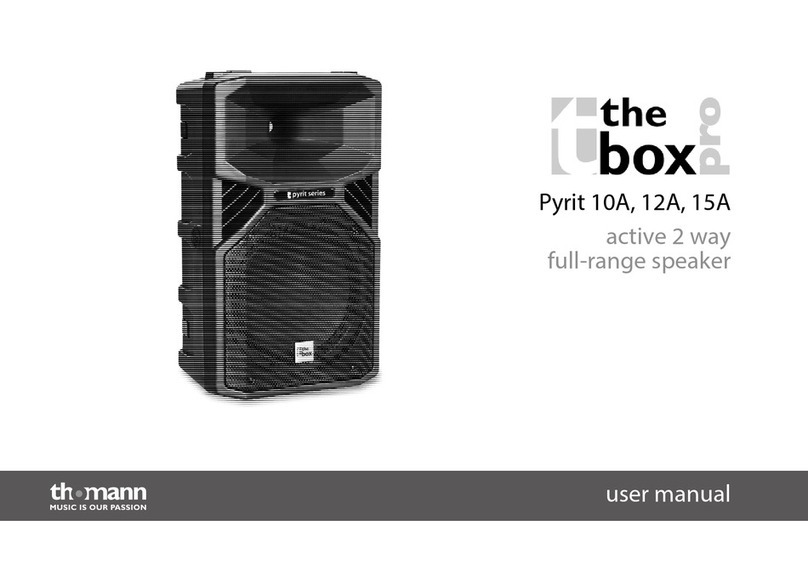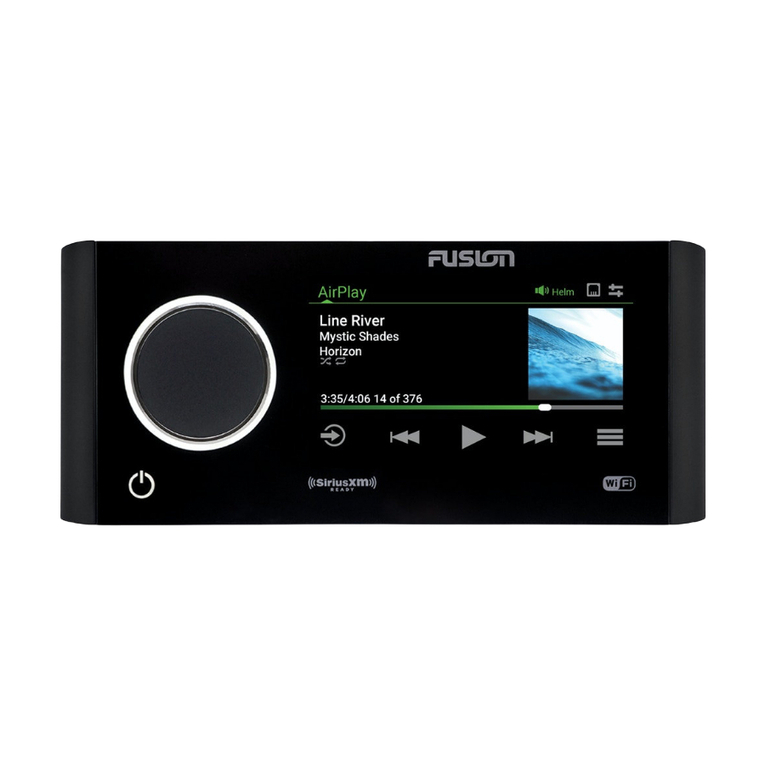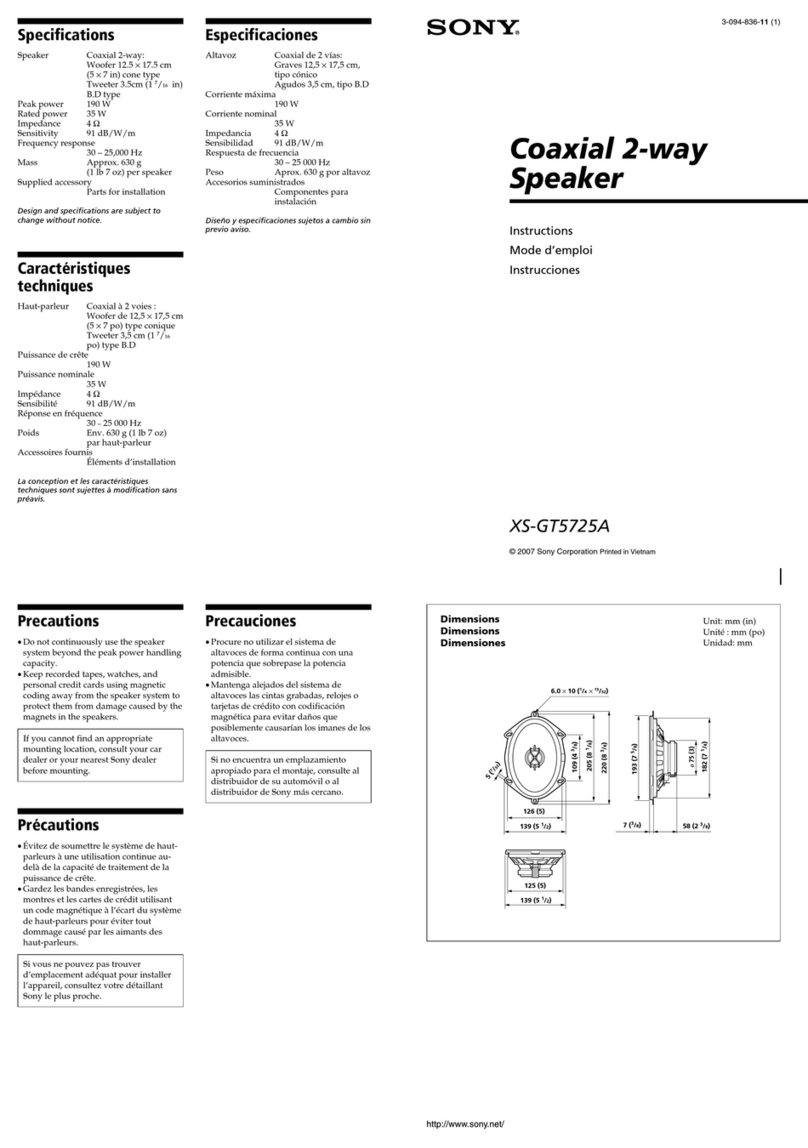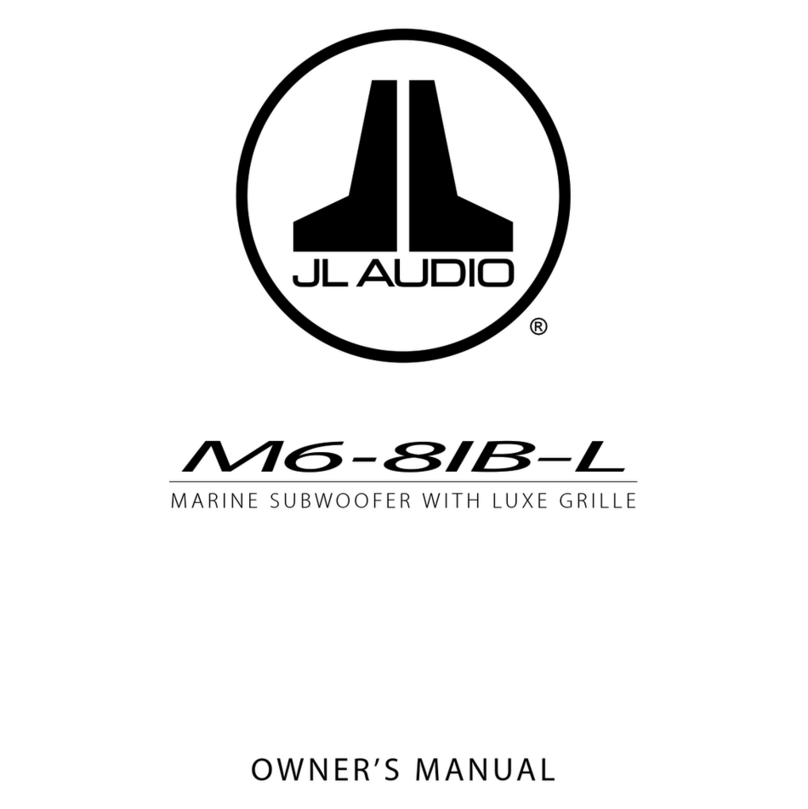
Wire Function Wire Color/
Number Notes
Power (+)
Red (yellow
on some wire
harnesses)
Connects to the positive terminal of a 12Vdc power source
capable of supplying 15A.
Ground (-) Black
Connects to the negative terminal of a 12Vdc power source
capable of supplying 15A. This wire should be connected before
connecting the red (or yellow) wire. All accessories connected to
the stereo must share a common ground location.
Amplifier on Blue Connects to an optional external amplifier to turn it on when the
stereo turns on.
Mute Brown
Activates when connected to ground.
For example, when connected to a compatible hands-free mobile
kit, the audio mutes or the input switches to AUX when a call is
received and the kit connects this wire to ground. This function
ality can be configured from the settings menu.
Dim Orange
Connects to the boat's illumination wire to dim the stereo screen
when the lights are on.
The gauge of the illumination wire must be suitable for the fuse
supplying the circuit it is connected to.
Speaker zone 1 left(+) White
Speaker zone 1 left(-) White/black
Speaker zone 1 right(+) Gray
Speaker zone 1 right(-) Gray/black
Speaker zone 2 left(+) Green
Speaker zone 2 left(-) Green/black
Speaker zone 2 right(+) Purple
Speaker zone 2 right(-) Purple/black
Auxiliary in left
Auxiliary in right
Provides a red and white RCA stereo line input for audio sources,
such as a CD or MP3 player.
Zone 1 line out (left)
Zone 1 line out (right)
Provides a full-range output to an external amplifier, and is asso
ciated with the volume control for zone 1.
Zone 2 line out (left)
Zone 2 line out (right)
Provides a full-range output to an external amplifier, and is asso
ciated with the volume control for zone 2.
Subwoofer out
Each cable provides a single mono output to a powered
subwoofer or subwoofer amplifier, and one or both cables can
be used, depending on the connection requirements of the
subwoofer or amplifier.
A connected subwoofer is associated with the volume control for
zone 1.
7

